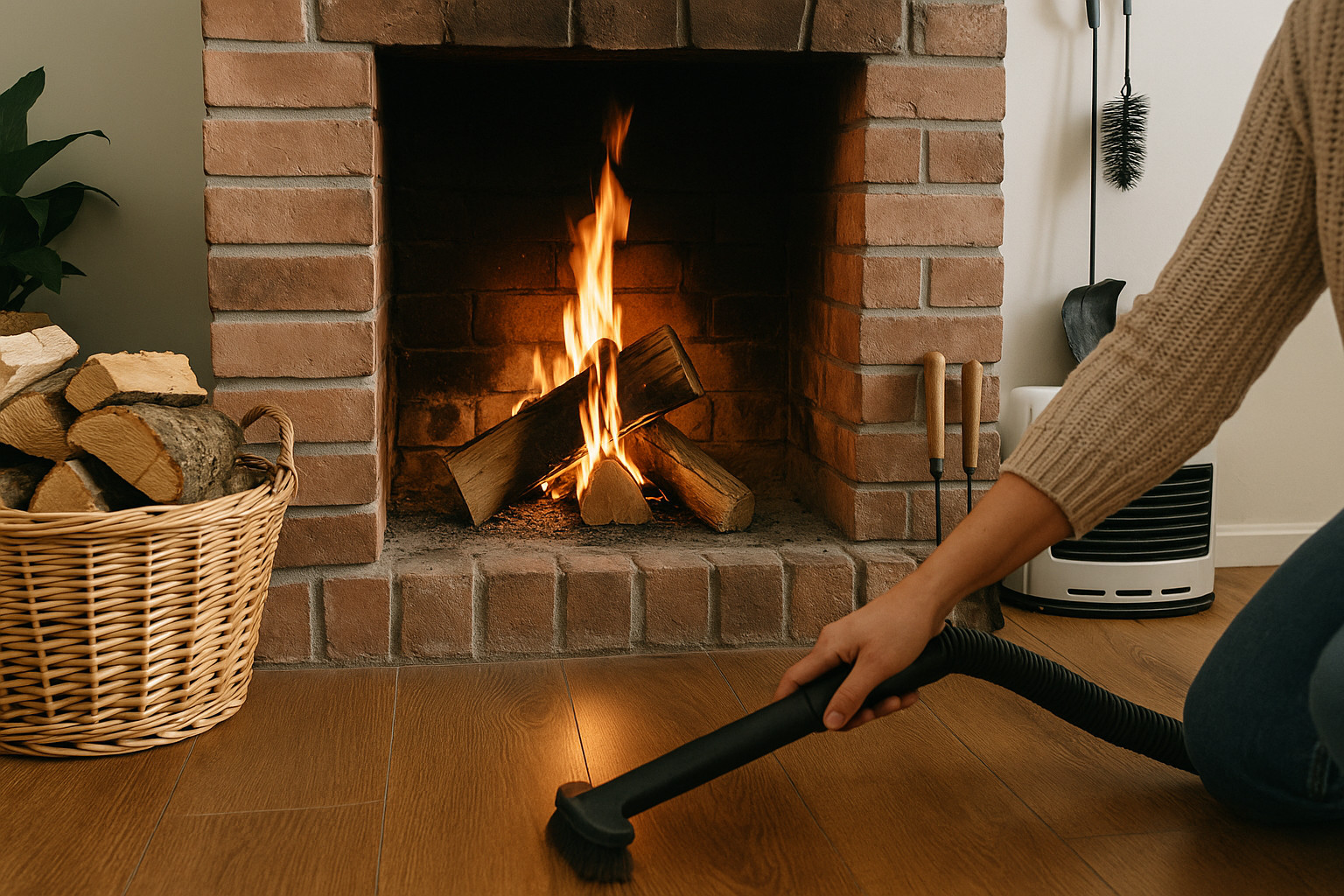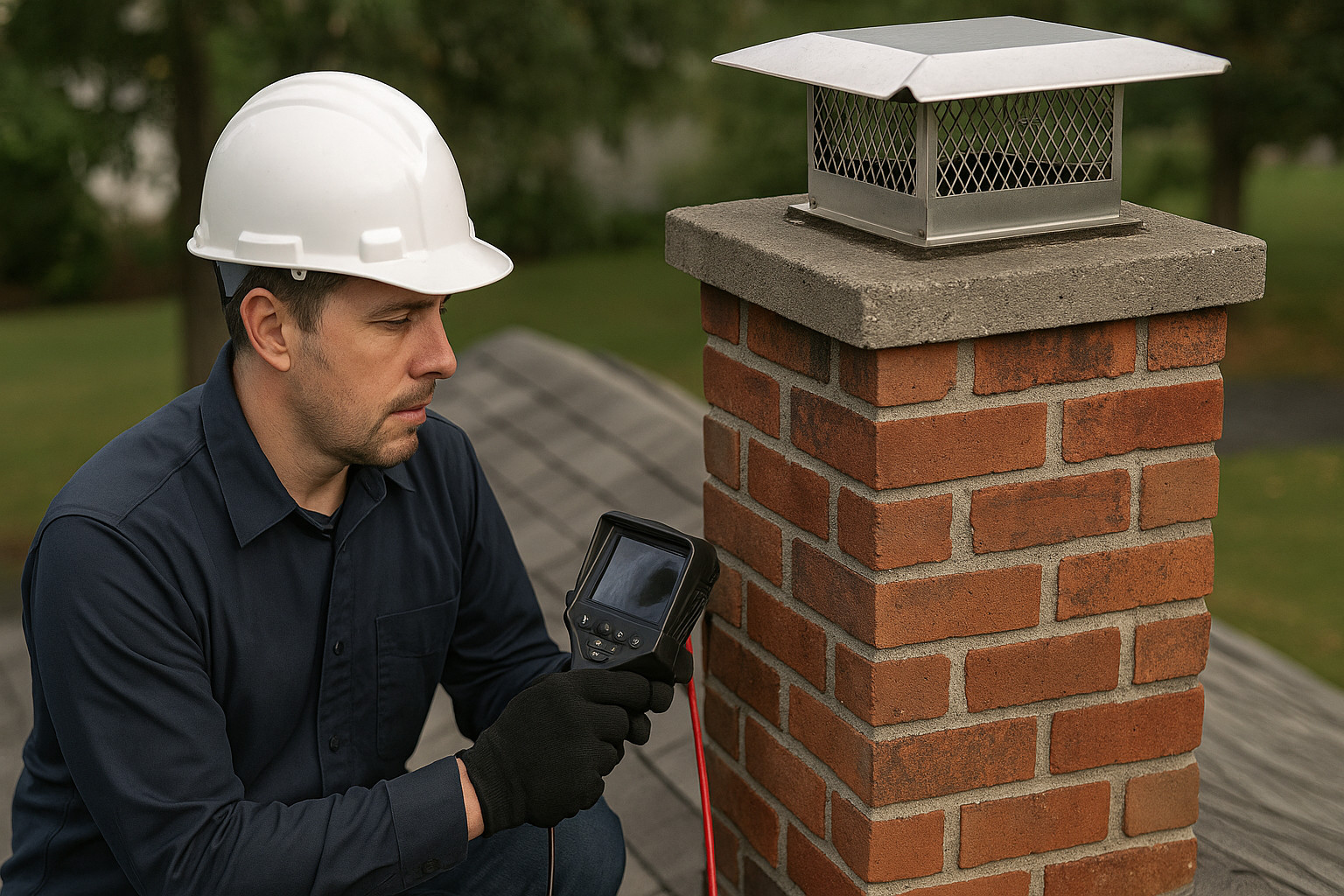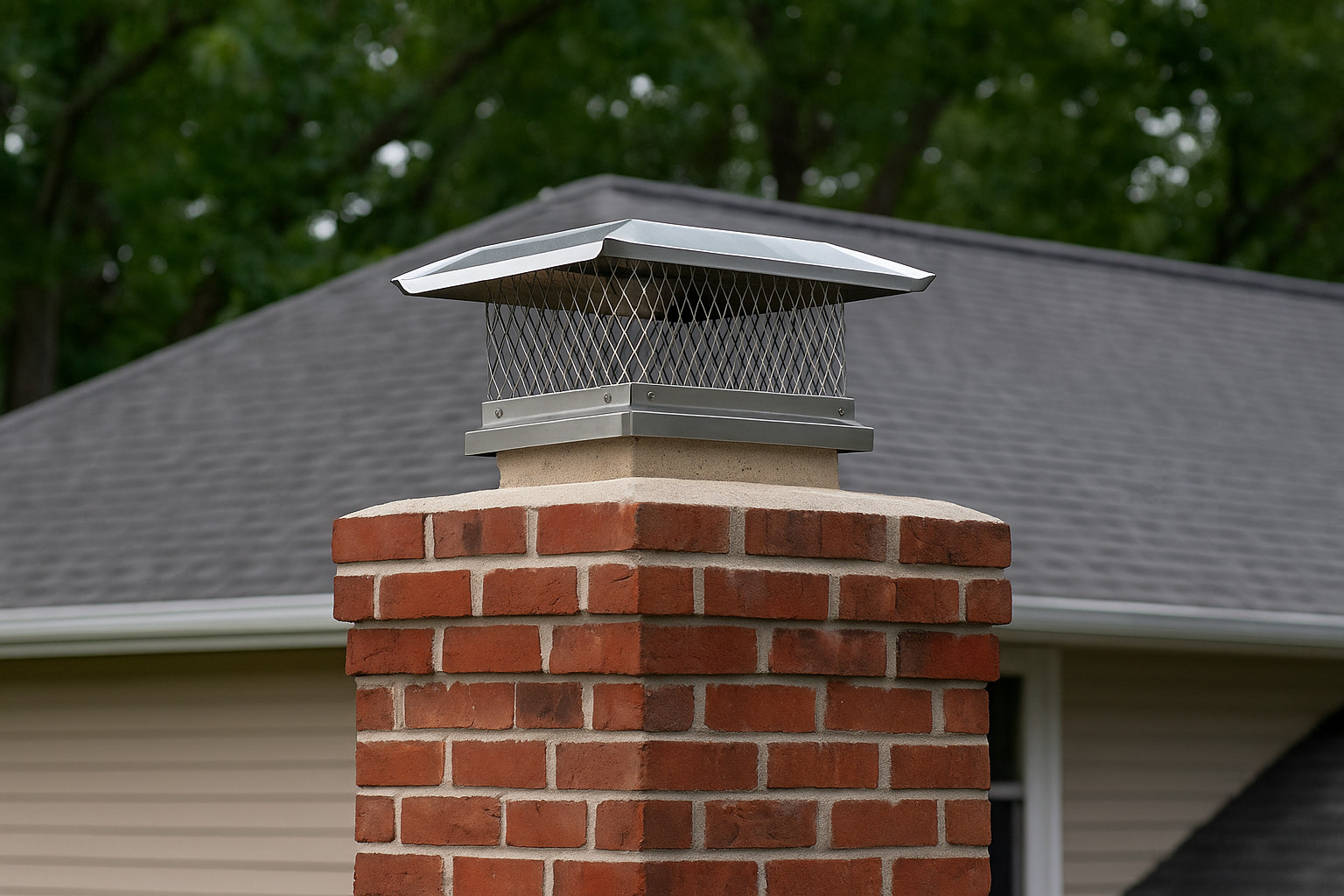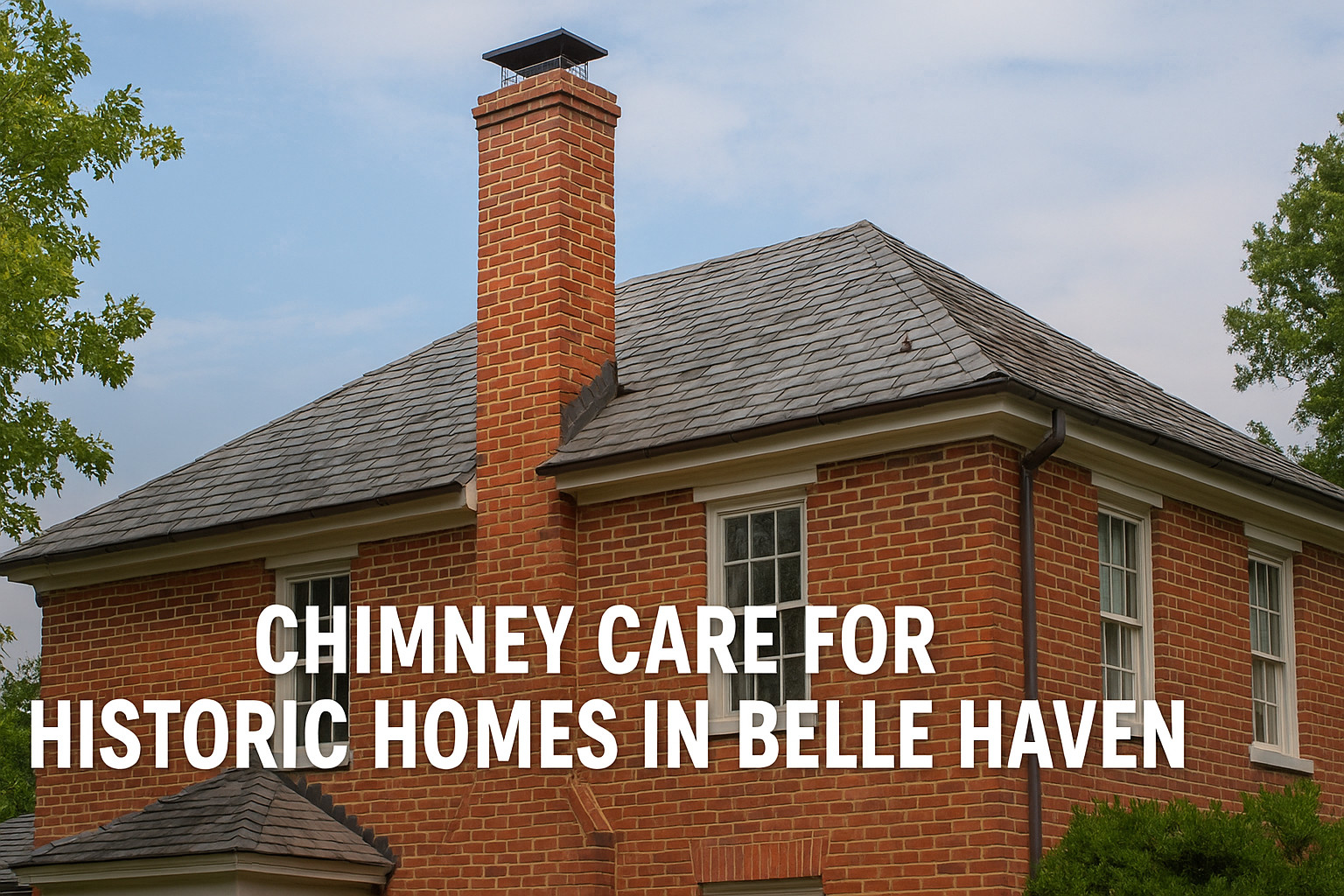East Norwalk Chimney Issues Caused by Coastal Weather
East Norwalk’s coastal climate puts chimneys at high risk for water damage, corrosion, and structural wear. From salt air to harsh storms, local weather can shorten chimney life. Certified Chimney CT offers expert inspections, sweeping, and repairs to keep your home safe year-round.
Share:
Table of Contents
East Norwalk’s proximity to Long Island Sound makes it one of Connecticut’s most weather-vulnerable coastal communities. While its scenic views and maritime charm are appealing, homeowners must contend with persistent coastal weather patterns that affect the structural integrity of their chimneys. Moisture, salt air, fluctuating temperatures, and wind all play a role in accelerating chimney damage over time. These environmental pressures can cause faster deterioration of chimney liners, caps, masonry, and flashing, especially for homes with older chimney systems or those constructed using non-waterproofed or porous materials.
Common Weather-Related Chimney Problems
Effects of High Humidity
Coastal humidity in East Norwalk contributes to internal moisture retention within masonry chimneys. The porous nature of bricks and mortar allows humid air and water vapor to seep in, leading to a slow but steady degradation of structural components. This often results in spalling bricks—where the outer layers break off due to moisture expansion—and the cracking of flue liners, which can compromise the chimney’s efficiency and safety.
Over time, moisture mixing with soot and creosote forms acidic compounds that can corrode both clay tile liners and metal chimney flues. Mold and mildew are also frequent side effects of high humidity in chimneys, which can trigger respiratory concerns, particularly in homes with poor ventilation.
Consequences of Frequent Storms
Heavy coastal storms common in East Norwalk bring driving rain, wind gusts, and sometimes salt spray, all of which can wreak havoc on chimney systems. Strong winds can loosen or dislodge chimney caps, allowing water and debris to enter directly into the flue. Flashing—a key protective component that seals the gap between the chimney and roof—is especially vulnerable during storms.
When flashing fails or deteriorates due to age or corrosion, water can infiltrate through the roofline and cause widespread damage. Water damage often extends beyond the chimney itself, affecting attic insulation, ceiling drywall, and wooden structural components. This is particularly concerning for older homes in South Norwalk or near Washington Street, where original materials may already be weakened by time.
Storms can also introduce debris like branches, leaves, and even small animals into unprotected flues, leading to blockages that disrupt the chimney’s draft and increase the risk of smoke backflow and carbon monoxide exposure.
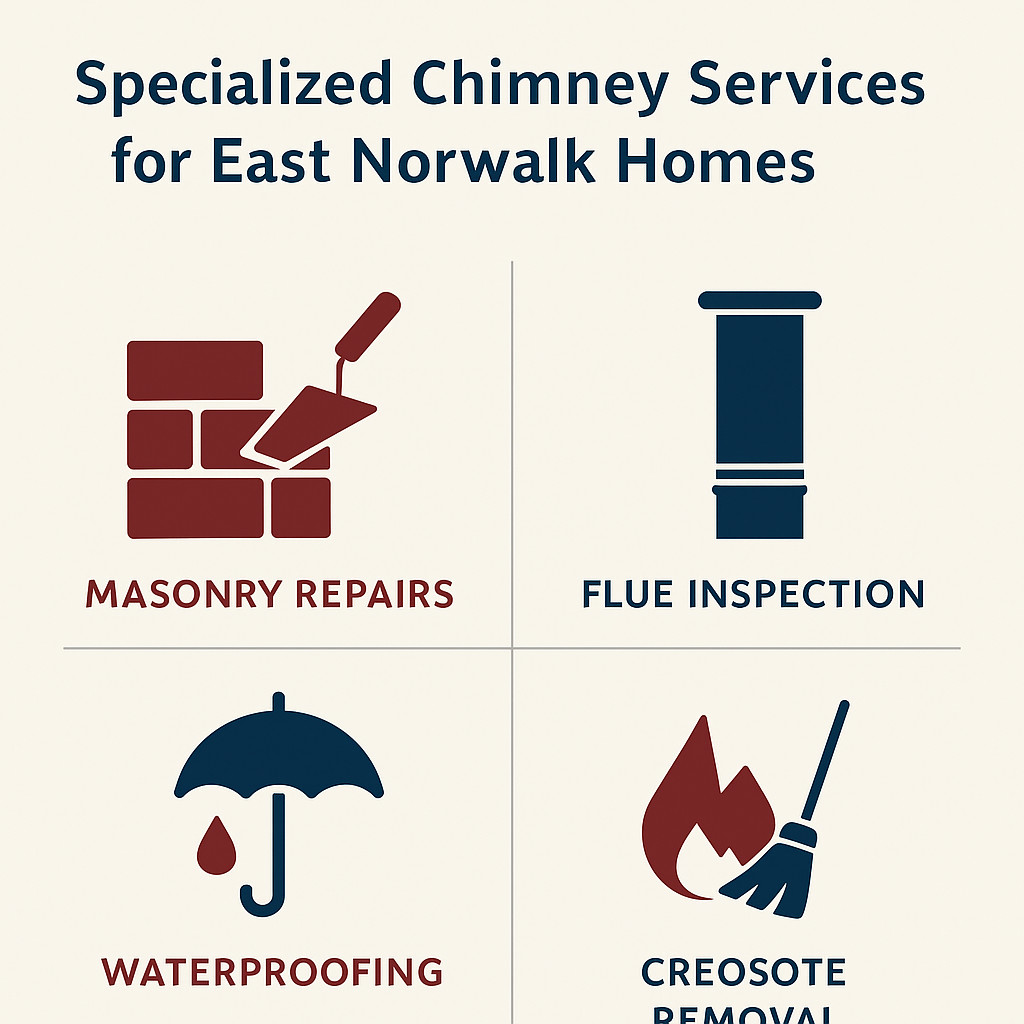
Gutter Systems and Water Management
Chimney sweep issues are often compounded by poor water drainage systems. Malfunctioning gutter leaks or clogged downspouts can allow water to pool around the chimney base or overflow into mortar joints. Homeowners should consider integrating seamless gutters and gutter guard systems to improve gutter repair and water management to reduce pressure on the chimney during heavy rains.
Structural Damage and Safety Hazards
Unchecked chimney damage caused by weather exposure can lead to significant structural failures. Water that penetrates the chimney crown or masonry joints will freeze and expand during winter, causing cracks and displacement. This freeze-thaw cycle is a leading cause of chimney deterioration in New England.
Cracks in chimney liners whether clay, stainless steel, or cast-in-place allow dangerous flue gases like carbon monoxide to seep into the home. Without a functioning chimney flue or proper chimney insulation, heating systems that burn oil, gas, or propane may pose a serious health risk.
Damaged flue liners also reduce the chimney’s draw efficiency, resulting in poor fireplace performance and increased creosote buildup. This not only elevates fire risk but may also void warranties on fireplaces or stoves. Regular chimney inspections and flue issues relining are essential for mitigating these issues.
Warning Signs to Watch For
- Water stains on ceilings near the chimney
- A musty odor coming from the fireplace
- Loose or missing bricks on the chimney exterior
- Birds nesting in the flue or signs of animal intrusion
If any of these signs are present, it’s time to schedule a chimney inspection with a trusted provider like Certified Chimney CT.
Importance of Regular Chimney Maintenance
Timely Inspections and Chimney Sweeping
Annual chimney inspections are essential for catching coastal weather damage early. Certified Chimney CT recommends scheduling inspections before each heating season, especially in areas like East Norwalk where salt air corrosion accelerates wear. These checkups assess chimney cap condition, evaluate flashing integrity, and examine flue liners for blockages or deterioration. Chimney sweeping removes creosote deposits and nesting debris that commonly collect due to wind-driven particles and birds seeking shelter.
Benefits of Professional Services
Hiring experienced chimney service providers ensures that damage is properly diagnosed and repaired using high-quality materials designed for coastal environments. Certified Chimney CT uses NFPA 211 standards and industry-leading inspection technology to assess hidden damage and apply weatherproofing solutions, such as chimney crown sealants and waterproof flashing membranes. Their team also provides dryer vent cleaning, fireplace insert upgrades, and flue relining to restore full functionality and safety.
Preventative Measures and Long-Term Value
Homeowners in East Norwalk can protect their chimneys by:
- Installing stainless steel or copper chimney caps to resist salt corrosion
- Sealing masonry with breathable water-repellent products
- Replacing outdated or rusted flashing
- Ensuring chimney insulation is intact to prevent heat loss and condensation
Integrating these strategies improves heating efficiency, reduces energy bills, and enhances indoor comfort during coastal winters. It also helps preserve the home’s value by preventing structural decay.
Conclusion: Proactive Steps for Coastal Chimney Care
Coastal weather in East Norwalk presents unique challenges for chimney services systems, but with proper maintenance and early intervention, homeowners can avoid costly repairs and safety hazards. Certified Chimney CT offers reliable inspections, repairs, and chimney leak solutions tailored to the local environment. Whether your home is along Compo Beach, Washington Street, or tucked within historic Norwalk neighborhoods, regular chimney service is your best defense against coastal damage.
To schedule an inspection or learn more about protecting your chimney in East Norwalk, Request Service with Certified Chimney CT today.
Article details:
- Published by:
- Certified Chimney CT
- Published to:
- Last modified:
- August 24, 2025
Share:
Continue learning:

